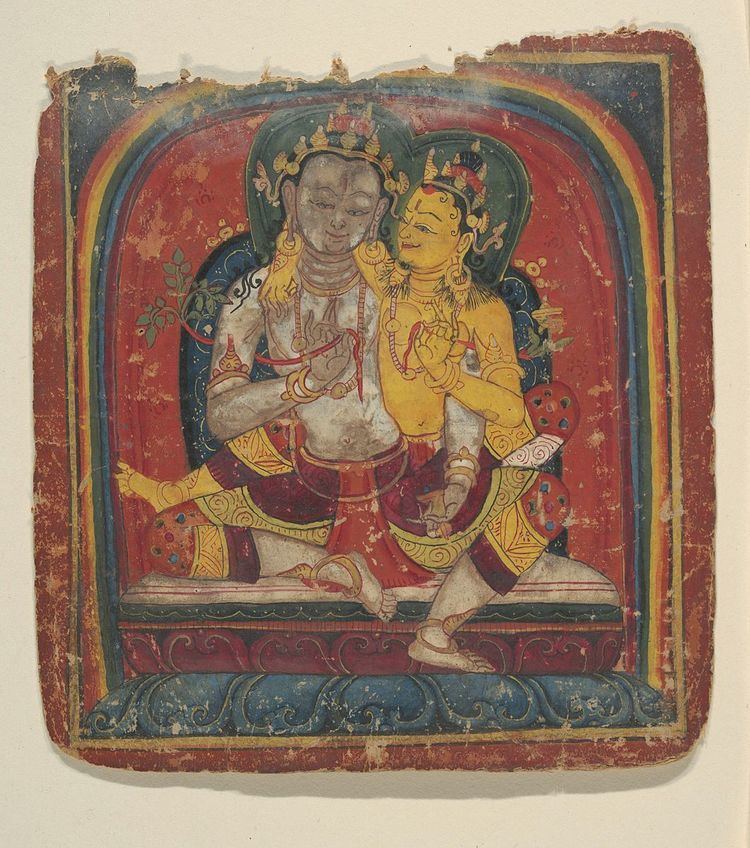 | ||
Tsakli (also “tsakalis”) are Tibetan Buddhist miniature paintings, normally produced as thematic groups or sets, which are used in rituals as initiation cards, and in the training of monks. Examples of this miniature art are also known from Mongolia.
Contents
Subjects
The subjects found on tsakli are similar to the better known larger Tibetan thangka scroll paintings on cloth, but much simpler, usually showing only a single deity, or a pair. The subjects are usually deities or ritual objects and offerings associated with these deities are represented on the tsaklis. Occasionally, Tibetan inscriptions on the backside can identify the subjects which are painted on the front.
Ritual use of tsakli
The tsakli which are normally painted in sets which can comprise from 6 to almost 100 small paintings of similar subjects are used as offerings in temples or in rituals. For example, before a temple building is started, the area can be marked with tsakli representing protective deities. In this case they are mounted on small wooden sticks. Similarly tsakli can be used by a buddhist lama to remove evil influences from a sick person, from a tree which does not bear fruit or a stack of grain which is going to be thrashed. A tsakli can also be placed in a portable shrine or box (Tibetan “gau”) and carried as a device giving protection to the traveller or pilgrim who carries this box around the neck or on a shoulder strap.
Materials
The majority of tsakli are painted on cloth (like most of the tangkas) or cardboard. There exist also tsakli which are printed from woodblocks on cloth or paper. Larger sets of tsakli are kept between two wooden covers in a similar manner as pages of Tibetan books are protected.
